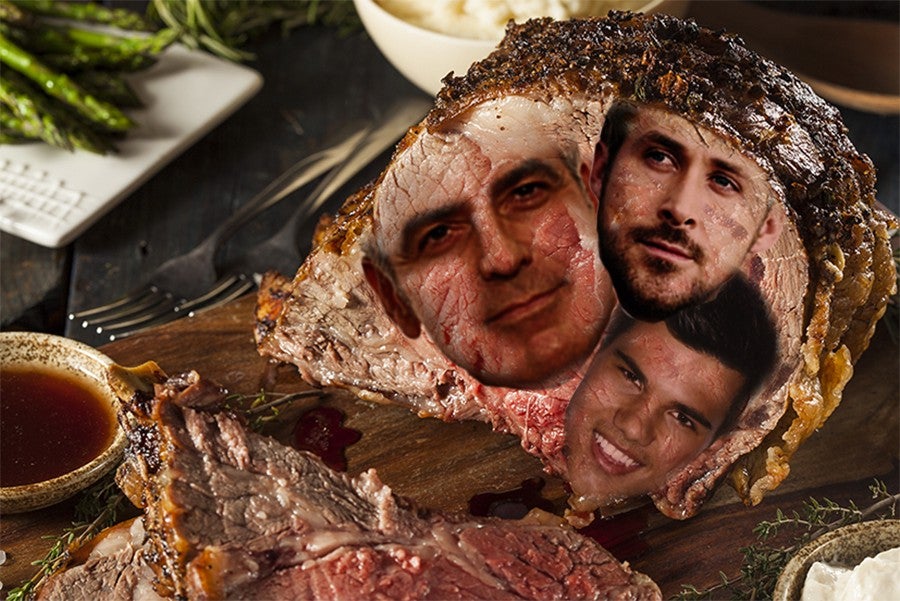Most of us have heard at some point or another that men and women, the Marses and Venuses of the humanoid planetary system, are star-crossed lovers: Men hit their sexual peak at 18, while women hit their sexual peak at 35, never the twain to peak (or orgasm) simultaneously. A recent column in The Telegraph complicates this further by suggesting that we start calling women in their 50s or 60s (particularly those who prefer younger men), not Cougars, but WHIPs: Women who are hot, intelligent and in their prime. This raises a question: If women are in their prime later in life, are we even more misaligned from the 18-year-old male prime than we thought, or has that shifted too? Can we pick whatever prime we want and call it a day? And when exactly are men in their prime?
First, we need to know where this alleged mismatched peaking comes from in the first place. As Medical Daily writes explaining the research, the idea that men are maximum horndogs at 18, while women don’t go nuts for the juice until they are 35, is based on Kinsey research from 1953. Scientists measured peak sex hormones in men and women and found that testosterone in men generally peaks at 18, when they are also most responsive to arousal. Estrogen peaks in women in their mid-to-late 20s. However, because fertility allegedly takes a nosedive at 35, researchers said that suddenly women have a higher sexual appetite to get a baby in them, thus hitting their “sexual prime” of responsiveness.
This notion has long been deemed misleading—at best only a partial way of assessing sexual peak. “Sexual peaks should not just be measured on a hormonal model, but should also include psychological well-being, maturity, and experience,” Medical Daily’s Lizette Borreli writes. “Sex is psychological and is driven by mental factors like body confidence, personal sexuality, and feelings of intimacy with a partner, which makes Kinsey’s theory an inaccurate model of human sexual fulfillment.”
Yet the myth persists. Sociologist Lisa Wade unpacks why the male sexual peak might be fake in a piece for Salon, where she explains how the idea has been propped up in a number of ways. Kinsey, for instance, also used the number of weekly orgasms as part of his definition of “prime” — which we now recognize as problematic not only because men orgasm more often than women, not to mention differently, but also because orgasms and rock-hard dicks alone are not accurate metrics for good sex. (Other studies put a man’s testosterone peak in his 30s, after which it drops off.)
“Here are some things we’re probably not considering when we estimate men’s sexual peak: comfort with being intimate with another person’s body, skill at giving another person an orgasm, the ability to bring on or delay one’s own orgasms as wanted, and an encompassing appreciation for sensuality as well as sexual acts,” Wade writes. “In other words, when we say that men reach their sexual peak at 18, it’s worth asking: ‘peak for who!?’ A man with a few more decades may be a much better sexual partner than one on the brink of adolescence and adulthood.”
Aside from measuring male sexual prime as a jackhammer-dick situation, we also pressure women to view sex as a danger more than a pleasure, and to be sexy but not sexual, Wade notes. This creates a lifelong cultural repression and discomfort with their bodies that prevents women from being confident and comfortable in their sexuality. It’s entirely possibly that women simply get more comfortable and accepting of their bodies in their 30s, thus making them more comfortable with expressing sexual desire and receiving sexual pleasure.
But back to men: We have other ways of measuring a man’s prime. A man is also considered to reach his physical prime in his 30s because afterward, muscle mass begins to decline. But if a man decides to work out in his 40s or 50s and rebuild that mass, he may actually reach physical peak then.
Other studies describe a man’s peak as the age when he is most attractive to the opposite sex: One study put that age as a man’s 20s, when he is by far considered the most universally desirable. But the study also found that men tend to increase their desirability again in their 50s. They call it the “George Clooney Effect,” when older men who have greater financial stability and higher status are viewed as catches. Incidentally, one report on the combined research on peak ages says that men at age 49 are most likely to cheat, particularly if they’re over 5-foot-10, and coincidentally while hitting their peak earning power. After the mid-50s, women tend to start ranking men as no longer sexy, even though men continue to report “fulfilling sex lives” well past their 70s.
Of course, all this is kind of bullshit, because like so many things, being in your prime, for anyone, shouldn’t really be about an age, but rather a combination of factors whose net result is feeling pretty baller. Back at Salon, Wade sums it up thusly:
Instead of thinking about sexual peaks at all, perhaps we should use a different metaphor: sexual evolution. We are all forced to fight for our own sexualities, contending with cultural, interpersonal, psychological and physiological factors that conspire to limit our imagination. Instead of anticipating or mourning a golden time, the goal could be embracing our sexual experiences as they change throughout the life cycle, sometimes trading one good for another, but always with the aim of maximizing the good.
We would add to this that being in your prime doesn’t have to be restricted to sex. The goal here is to forge an overall sense of self, and that’s the sort of thing that comes from a variety of life experiences. A man’s prime should really come down to his personal assessment of having his shit together, physically, sexually, financially or emotionally, or any combination therein.
And just as women have learned to be dubious about any message that they should feel a certain way at any age, men, too, should side-eye suggestions they’ve peaked already. Or as a commenter notes on Reddit in a thread asking men what age they considered their prime: “If he’s living his life right, his current age range should be his prime.”

